The problems that the US city of Flint had with its water were just the first drip in a wider problem, finds Sarah Houlton
In places where the water is safe to drink, we take it for granted that when we turn the tap on, an unlimited supply of clean drinking water will flow out. Apart from very occasional bacterial outbreaks that lead to well-advertised notices to boil the water, we can be pretty sure that drinking tap water won’t make us ill. But what about when something out-of-the-ordinary occurs? That’s what happened in the US city of Flint, Michigan, in 2014, when unsafe water started flowing through residents’ taps.
The Flint disaster had its roots in a decision by an emergency manager, appointed by the state to cut spending in the financially struggling city, to switch the source of the city’s water. In April 2014, treated Lake Huron water from the Detroit Water and Sewerage System was replaced by water from the local Flint River.
People soon started to complain that their water was coloured and smelled bad. In August, a boil notice was issued as E. coli contamination had been found. Higher levels of chlorine disinfectant were added, but that led to a warning in December that chlorinated by-products had exceeded acceptable levels. Later, there would also be an increase in the incidence of Legionnaire’s disease. But a serious long-term problem was not spotted until January 2015 – elevated levels of lead in the water. In a failure of water management protocols, no corrosion inhibitor was being added to the Flint River water before it was piped into homes, and in September 2015, a study found elevated levels of lead in the blood of Flint children.
Yet it was not until October 2015 that a public health emergency was finally declared, almost 18 months after that disastrous decision to switch the water source. Bottled water is still being delivered free to many residents. But by the time people were advised to drink only bottled or filtered water, the damage was done.
The first signs
According to John Sullivan, chief engineer at the Boston Water and Sewage Commission in the US, who went to Flint to help out in the aftermath, residents started to report milky-looking water about a week after the water source was switched. ‘This was caused by an orthophosphate coating, put on by inhibitor-treated water from the Detroit system, starting to flake off the pipes,’ he says. The hydrants were flushed in an attempt to clear the water, but this merely accelerated the removal of the protective coating.
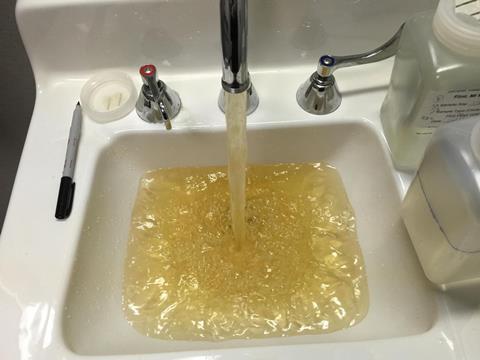
The water then started to run light brown. ‘The corrosive water started to work on the rust on the internal part of the water mains,’ he explains. They flushed again, but that merely aggravated the situation and turned the water deep brown. With the old lead pipes now unprotected, lead started to leach into the water.
While the acute situation in Flint was extreme, elevated lead levels in drinking water is far from an isolated issue. An analysis of the previous four years’ data from the US Environmental Protection Agency (EPA) by USA Today in March 2015 found that almost 2000 water systems, across all 50 states, showed excessive levels of lead. About a third of them had lead levels above 40ppb, way above EPA’s ‘action level’ of 15ppb, and 350 provided water to childcare centres and schools. Some of the levels were astonishing – at one elementary school in New York State, the lead level in one sample was in excess of 5000ppb, high enough to be considered hazardous waste. And, worryingly, 180 of these water suppliers had failed to inform consumers that there was a problem.
Lead toxicity
There is no safe level for lead in the human body. Once the metal has been ingested and enters the bloodstream, it is first carried to soft tissues, including the liver, spleen, muscles and brain. If it is not excreted, it will be deposited in the bones and teeth, where more than 90% of the lead present in an adult body can remain for decades. It will be released as we get old, during pregnancy and breastfeeding, and when bones are damaged.
Lead is not involved in any of the human body’s biochemical processes, but it is capable of mimicking other bivalent metals that are cofactors to enzymatic reactions, notably calcium, iron and zinc. It binds to the enzymes, but does not activate them, thus halting their normal activity. It is profoundly neurotoxic, and can cross the blood–brain barrier by mimicking calcium, where it interferes with neurotransmission, impacts the growth of neurons, and can damage the myelin sheaths around those neurons.
Higher levels accumulate in babies and children exposed to lead, and its adverse effects occur at much lower levels of exposure than they do in adults, so the risk is much greater. Even unborn babies are at risk, even if the water is safe, as stored lead leaches out of the mother’s bones along with calcium as the baby’s bones are being formed.
As well as damaging both the central and peripheral nervous systems of the young, lead exposure is associated with stunted growth, behavioural problems and learning disabilities; it can affect the formation and function of blood cells, and even affect hearing. If the lead level in the blood of a child reaches 5µg/dl, the US Centers for Disease Control and Prevention recommends public health interventions.
Preventing lead contamination
The battle to deal with lead contamination in its various guises has been going on for 40 years in the US, according to Tracy Mehan, executive director of government affairs at the American Water Works Association. Following the elimination of lead in gasoline under the Clean Air Act and the efforts to remove lead from paint, a 1986 update to the Safe Drinking Water Act banned the installation of new lead service lines in public water systems. ‘We are now dealing with a legacy problem of lead service lines in both public and private ownership,’ Mehan says. It is these historical lead service lines that were affected by the Flint water.

The EPA’s Lead and Copper Rule came into effect in 1991. This mandated sampling of water that had been standing for 6–8 hours in homes, and if the 90th percentile lead level exceeded 15ppb, action needed to be taken via corrosion control.
As Sullivan explains, this is usually done via the addition of orthophosphates to the water to form a coating on the inside of the pipes, or by increasing the pH to reduce the propensity of lead to leach into acidic water. ‘In Boston, we find that pH adjustment works best, and we now have our numbers down in the 6–7ppb range,’ he says. ‘But where there are a lot of minerals in the water, it is a whole different scenario in terms of chemistry.’
The behaviour of water, and thus its ability to leach lead from pipes, varies from one source to another. Move from an area with soft water to one where it’s hard, and you will use more soap and have to descale the kettle regularly, just because of the different chemistry of the water. There are many changes that can affect the properties of the water, such as adding fluoride and altering its pH. Disinfection byproducts can change it, too: if the pH is too high, trihalomethanes can form, but too low and you may get haloacetic acids. Sullivan says a pilot study using real local pipes should have been carried out before the switch was made.
The Flint issue raised awareness of such problems, and more people are now getting their water tested and looking at the piping in their homes, says geologist Brian Oram of Pennsylvania-based BF Environmental Consultants. The starting point in gauging risk is knowing the age of the house, and when was it remodelled. The next step is to look for warning signs of a problem – leaky pipes, a bitter taste, blue-green staining, and very blue water in a full bath. ‘That’s usually a sign of copper corrosion, and if there is copper there will likely be lead,’ he says. ‘The next step is some basic testing, and if it looks like there is significant corrosion, we’ll do flush testing, which will help identify if the problem is at the piping in their home or in the water main.’
Short term fix: water filters
The main short-term alternative to bottled water is to use a suitable water filter to scavenge the lead. These can be mounted to the kitchen tap, so that water for drinking and cooking will be filtered. This water does not need to be used for the washing up, or bathing. ‘You can sit in a pool of water that contains lead, and it won’t affect you,’ Oram says. ‘That was one of the sad things in Flint – a lot of people were washing their kids in the bottled water they were given as they were scared to bathe them in the tap water. But it’s fine, as long as they don’t drink the bathwater!’
NSF International, an independent testing company that led the development of the US standards for materials that come into contact with drinking water, worked with the EPA, the authorities in Michigan and the Flint public school system to provide information about water filters and how to use them properly. ‘We also participated in a number of Flint community meetings to help inform participants about the importance of using NSF-certified water filters, and to answer questions about how the filters work,’ explains Rob Herman, director of NSF International’s laboratories in Ann Arbor, Michigan.
The correct type of filter, replaced regularly, will reduce contaminants below allowable limits. ‘Testing filters for certification includes verifying specific contaminant reduction claims,’ Herman says. ‘For example, we add the contaminant, such as lead, to the test water at a high, continuous level, and pass this water through the filter beyond the claimed life of the filter. For lead, we add 150ppb to the water samples. To pass, a filter must be able to reduce the lead level in the water to below 10ppb continually.’
Long-term fix: replacing the pipes
Lead water pipes are still fairly common, particularly in old cities. Long-lasting, malleable lead seemed a good choice when the public water systems were first installed, but its hazards were not understood. Boston, for example, was still installing lead pipes until 1934, when it switched over to copper, and the city started to replace the lead ones in the 1960s and 1970s. Chicago was still laying new lead pipes as late as 1986.
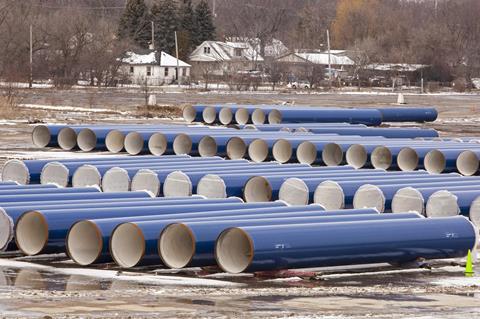
In most of the US, the pipes in the street belong to the utility company, but the pipes leading from there into the property belong to the home owner. ‘We replaced all of our lead pipes we knew about over a 30-year period as they leaked because of galvanic corrosion between the lead and the brass fittings, but there was still a lot of lead in the homes,’ Sullivan says.
The EPA is in the throes of updating the Lead and Copper Rule, and Sullivan believes it will mandate several things, including a requirement to determine how many lead pipes are present. ‘You can’t start solving a problem if you don’t know what the problem is,’ he says. He also expects the action level of 15ppm to be reduced to 10ppm.
Mehan believes the EPA might stipulate ways in which a utility company might develop a shared responsibility approach to the removal of lead service lines on private premises. ‘Whether they can require utilities to pay for the removal of lead service lines on private property is another question,’ he says. ‘That would be a major policy change.’ When older houses go on the market, real estate listings already proclaim whether the paint has been ‘deleaded’ or not; this could be extended to lead piping. Many water authorities, including Boston, are offering grants and loans to householders to help pay for lead pipe replacement.
The required infrastructure investment is significant. Mehan says there are an estimated 6.1 million lead service lines still in place in the US (other sources put the figure as high as 10–11 million), and assuming an average of $5000 (£4000) to replace each line, that’s an investment north of $30 billion. ‘That could be a low estimate,’ he says.
Sullivan says that partial replacement causes further problems, as it disturbs the lead on the un-replaced side. ‘One study suggests that for six months after the half of a pipe owned by the city has been dug out, the lead will be elevated at that house until the place where you cut and disturbed the pipe is pacified again,’ he says. ‘I wouldn’t be surprised to see a requirement for lead removal filters to be given to households when the water company re-lays its part of the service line.’
But even when those lead pipes are gone, there will still be lead in domestic plumbing, thanks to lead solder, and lead used to soften the metal in brass joints and fixtures such as taps. Including lead also assists in the manufacture of cast components, as it pressure-seals any small pores that might develop during the casting process. Even those that are described as low-lead fixtures are likely to contain some lead.
In some, mainly newer, areas, lead was never used and the service lines are mostly copper. But even here, corrosion control must still be maintained because of the lead present in fixtures, Mehan explains. ‘Getting that right is absolutely fundamental, and that’s why the situation in Flint was so egregious,’ he says.
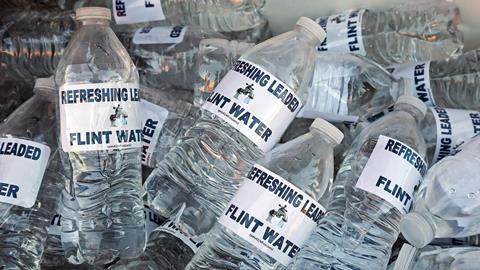
The alternatives to lead
There are two main alternatives to lead pipes: copper and plastic; although stainless steel is also occasionally used. ‘Copper tube and fittings are 99.9% pure copper; they have a little phosphorus in them but they contain no lead,’ says Andy Kireta, vice-president for market development at the Copper Development Association.
Kireta explains that the copper industry has been working hard towards finding alternatives to lead in the alloys used to make fittings. ‘Alloys containing elements such as bismuth, silicon and sulfur allow the parts to be made as efficiently as they were with a leaded brass, but without any lead present,’ he says.
Plastic pipes contain no lead, either. The plastics used for water pipes are polyethylene, cross-linked polyethylene (PEx), PVC, and chlorinated PVC. PVC is usually cheaper than PE or cross-linked PE in terms of material costs, says Dick Church, executive director of the Plastic Pipe and Fittings Association, but PE can be easier to install – rigid, straight PVC pipes need to be jointed, whereas PE piping can simply be unrolled, with a joint at each end. Individual pipe manufacturers blend the resin with a variety of proprietary additives.
Recent studies project a 100-year life expectancy for larger diameter PVC and polyethylene pipes
Kireta says that copper has a very long service life, and copper pipes underground are expected to last up to 100 years, whereas many of the replacement plastic products suffer oxidative degradation in underground services. ‘We now have the experience that they can reach end-of-life after perhaps 25–30 years,’ he claims. Although the cost of a copper pipe is maybe three times that of a plastic one, the material cost represents maybe only 5% of the cost of replacing an underground pipe, with most of the expense coming in the excavation process.
However, Church says there is plenty of evidence, including 50 years of use, that plastic pipes can last indefinitely, unless they are physically damaged or improperly installed. ‘Unless there is something that is wrong with the site, such as being in an oilfield or in an area where a gasoline tank has leaked, there is no reason to believe it won’t last,’ he says. ‘Recent studies project a 100-year life expectancy for larger diameter PVC and polyethylene pipes, which are basically the same materials that service lines are made out of.’
Plastic, particularly cross-linked polyethylene, is being used extensively in California, Florida and other areas where the water or the soil will eat through a new copper installation within months. ‘This is a huge market for plastic pipe now, because copper reacts with any kind of acid or strong base in the soil or in the water, having a deleterious effect on the metal.’
Copper can leach out of pipes, although Kireta claims that in most waters it is not an issue. ‘In some waters that have low pH or very high alkalinity, you can get copper leaching that would exceed the federal mandated level,’ he says. ‘In such cases, you would either use something else, or do corrosion control adjustment. In the US, only 2–5% of waters exhibit this natural trait, so it is not a major occurrence, and it can be predicted.’
It’s a fine balance, though. Addressing corrosion for one substrate can actually cause problems with another – higher levels of oxidising disinfectants like chlorine, for example, can corrode plastics. ‘As the water is balanced, attention must be paid to all the materials in the system, because tweaking one factor can make corrosion worse for the others,’ Kireta says.
Never again
While aspects of the regulations could be improved, Mehan says, those already in place covered what happened in Flint. There simply was not adequate compliance by the city, or oversight by the regulators, and several officials are facing legal charges. ‘No doubt a lack of capacity in the regulatory agencies was a part of it,’ he says. ‘State governments and EPA budget have been shrinking, and Flint has its own financial problems. No matter how good your laws and regulations, you still have to have the personnel, the expertise and the political will to deal with these issues.’
Despite the city’s high water rates, he says, the money was not being invested in the water system, it was being used to support other functions of city government in a very poor community. ‘Whatever the cause,’ he says, ‘Flint has become an icon in the discussion over the need to invest in water infrastructure in the US.’
The tragedy is, Sullivan concludes, it should have been prevented. ‘It was negligence,’ he says. ‘Any water professional knows that, as soon as they saw those tell-tale problems, they should have been blowing whistles and getting on it right away.’
Sarah Houlton is a science writer based in Boston, US
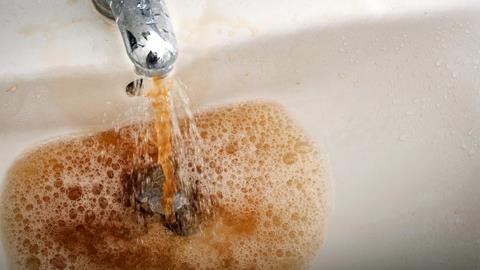

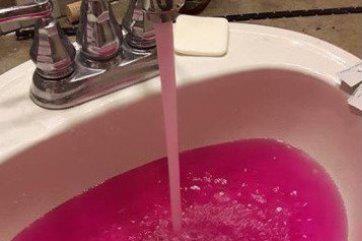











No comments yet